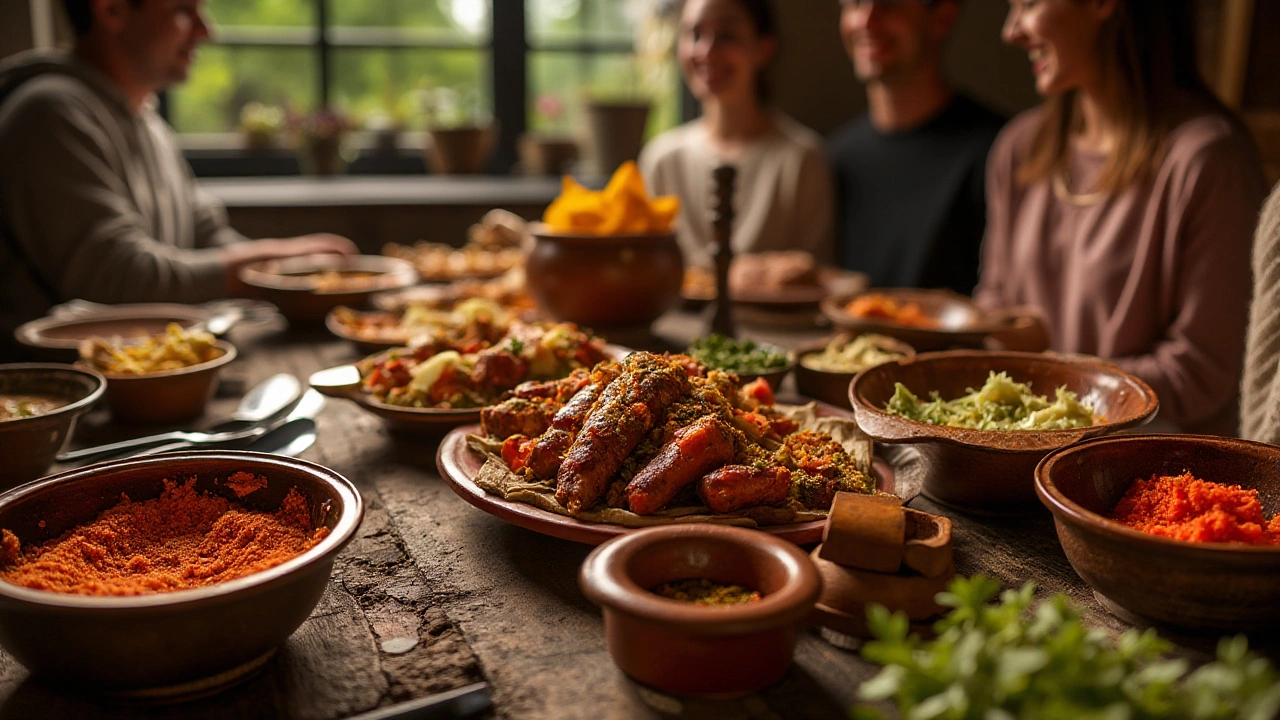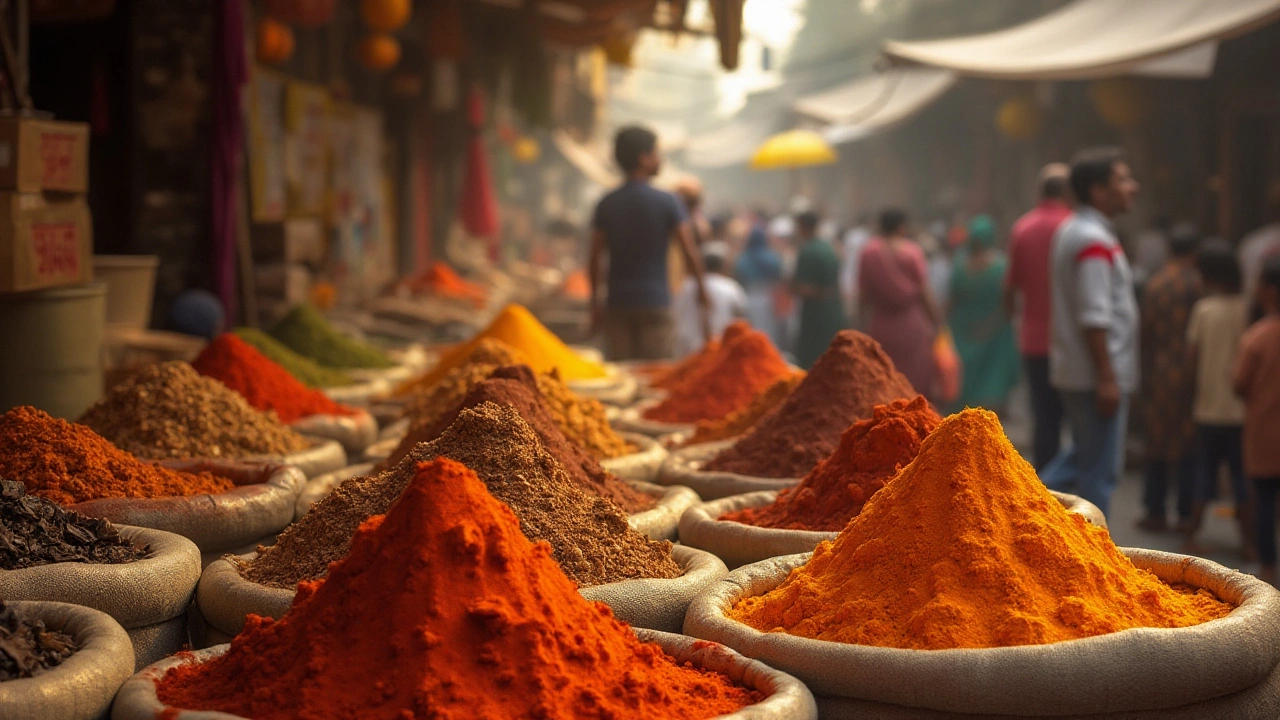When it comes to preparing the beloved tandoori chicken, the magic truly rests in the spice mix. But what happens if you find yourself without tandoori seasoning in your pantry? Surprisingly, this isn't an end-all situation. There are numerous other ingredients and combinations that can seamlessly replace tandoori seasoning, offering a similar depth and warmth.
Let's take a delicious journey through your kitchen shelves to uncover the secrets to replicating the vibrant flavors of tandoori seasoning. Whether you delve into creating a blend of your own or reach for other common alternatives, there's always a way to keep your dishes delightfully spiced. Stay with us as we unwrap the mysteries of this aromatic element of Indian cuisine.
- Understanding Tandoori Seasoning
- Simple Substitutes You Can Try
- Creating a Homemade Tandoori Blend
- Spice Pairings for Authenticity
Understanding Tandoori Seasoning
The allure of tandoori seasoning is deeply rooted in Indian culinary tradition, with its origins tracing back to the northwestern region of India, where it was used to flavor foods cooked in a tandoor—an oven made of clay. This blend typically combines a plethora of spices including cumin, coriander, turmeric, and the much-celebrated garam masala, each adding its unique note to the symphony of flavors. The vibrant red hue often associated with tandoori dishes traditionally comes from the use of ground annatto or even saffron for a more natural alternative.
Tandoori seasoning is characterized by its smoky and earthy flavor profile, which does wonders in penetrating meats and vegetables with warmth and depth. Aside from its visual appeal and taste, this seasoning holds cultural significance, often being reserved for special occasions and gatherings. The flavor envelops the senses, creating a memorable dining experience that brings families and communities together around a shared table. This communal aspect of food is as much a part of its allure as the taste itself. As noted by Madhur Jaffrey, a renowned authority on Indian cuisine, "The essence of Indian cooking is variety and abundance, and tandoori seasoning reflects just that."
The complexity of tandoori seasoning also lies in the delicate balance of spices, each playing a precise role in both aroma and taste. Not only do the spices need to meld well with each other, but the seasoning must also accentuate the flavors of the main dish, whether it's chicken, pork, or a selection of roasted vegetables. This consideration makes tandoori mix a versatile pantry staple, adaptable to different ingredients while retaining its distinct character. The advent of global spice trade networks brought new possibilities, blending traditional Indian spices with flavors from the Middle East and beyond, resulting in the rich tapestry of flavors we associate with traditional tandoori dishes today.
For those eager to embark on a culinary adventure, understanding these spices' roles offers insight into crafting not just meals but experiences. Embracing the essence of tandoori chicken alternatives begins with appreciating the nuances of this spice blend. In the end, the versatility and adaptability of tandoori seasoning make it a beloved choice across various cuisines—reflecting the spice of life itself, inviting you to experiment and explore beyond the traditional boundaries with a touch of creativity and a generous sprinkle of history.

Simple Substitutes You Can Try
Finding an alternative to the beloved tandoori seasoning might initially seem daunting, but it's all about balance and creativity. You can achieve the complex taste of tandoori chicken alternatives with a combination of spices that are readily available in most kitchens. Begin with a warm and earthy base by mixing equal parts of cumin and coriander. These two spices form the foundation of many Indian dishes, providing an aromatic and slightly citrusy aroma that can tantalize the senses. To bring out the fiery essence of tandoori, add a generous pinch of cayenne pepper to mimic the heat.
For those seeking a touch of authenticity, incorporating smoked paprika can simulate the chargrilled flavor synonymous with tandoori dishes, while a dash of cinnamon will add subtle sweetness. Garam masala is another excellent substitute. This blend of spices is a powerhouse ingredient, packing a punch with hints of clove, cardamom, and mace, all essential in replicating the traditional flavor profile. But don't stop there! A spoonful of yogurt when marinating your chicken helps capture the creaminess often present in tandoori cuisine.
According to Vivek Singh, a famed chef in Indian cuisine, "It's not always about following a recipe to the letter. Understanding each individual spice's role will allow you to play around and improvise." This is particularly true when you realize ingredients like garlic and ginger paste can elevate your homemade tandoori mix. Grated or minced, they contribute to the depth you seek while promoting tenderness in the meat. Squeeze in some lemon juice for acidity and brightness—this will not only aid in breaking down proteins but also cut through the rich, hearty flavors.
Experimentation is key when substituting for tandoori seasoning, and sometimes the best blends come from happy accidents in your spice roster. Begin by setting up a 'dry run' with a small amount of chicken—or even vegetables—to find the mixture that suits your palate. Record the quantities in a journal or your phone for future replication. Ultimately, you might discover your unique house blend that stands up to, or even exceeds, the flavors of classic tandoori seasoning.

Creating a Homemade Tandoori Blend
Building your own homemade tandoori blend is not just an exercise in spice mixing; it's a journey through aroma, history, and a touch of personalized creativity. The origins of tandoori seasoning hark back to the cuisines of Punjab, deeply rooted in fragrant spice mixtures used for centuries. Yet, what makes the perfect blend can vary, reflecting not just your pantry stock but also individual taste preferences. A typical mix will often include core components such as ground coriander, cumin, and paprika, contributing to that warm, vibrant red hue imparted to dishes. However, the adventure lies in adding just a hint of cinnamon or cardamom, which elevates the blend to a more nuanced level of flavor.
To start this flavor expedition, you might consider beginning with a solid base of cumin and coriander, as these two spices lay the groundwork upon which most Indian spices build their character. Paprika joins them, added for not just color but a subtle earthiness that melds the spices together. Then, a pinch of ground turmeric infuses both color and health benefits, celebrated for its anti-inflammatory properties. If you're aiming for authenticity, include garam masala—another quintessential element in Indian spice cabinets. Its complexity is due to its mix of cinnamon, cloves, and cardamom. Indeed, a tandoori chicken alternative sometimes relies heavily on the spicy warmth of garam masala to mimic the traditional taste.
A Step-by-Step Guide
- Gather Ingredients: You'll need ground coriander, ground cumin, paprika, garlic powder, ginger powder, cayenne pepper, and garam masala. Optional additions include ground cinnamon and black pepper.
- Measure and Mix: Measure two tablespoons of ground coriander, two tablespoons of cumin, and one tablespoon of paprika. Add one teaspoon each of garlic powder and ginger powder. Depending on your heat tolerance, a pinch to a half teaspoon of cayenne pepper can be incorporated.
- Blend and Store: Combine all the ingredients in a bowl, ensuring they are evenly mixed. For best results, transfer the blend to an airtight container to maintain its freshness and potency.
- Adjust to Taste: The beauty of this exercise is flexibility. Like a painter with a palette, you can tweak the levels of each spice. Consider lessening the paprika for a lighter hue or increasing ginger for a zestier punch.
Creating a spice blend at home not only allows for convenient access when preparing tandoori chicken recipes but also empowers cooks with the freedom to experiment. Variations abound, like incorporating fenugreek leaves or a dash more turmeric for those seeking a personalized touch. As Chef Gordon Ramsay once reflected in his journey through Indian markets, “It's the subtlety of the spice, not just the heat, that elevates the dish.” This eloquent sentiment captures the heart of crafting a blend that is uniquely tailored yet rooted in tradition.

Spice Pairings for Authenticity
Creating an authentic taste when substituting for tandoori seasoning isn't just about finding the right ingredients, but balancing them with care. Tandoori seasoning is renowned for its complex yet harmonious marriage of Indian spice mix. At its core, it captures the warmth of earthy spices such as cumin and coriander, the brightness of ginger and garlic, and the undercurrent of hot pepper. When trying to replicate this experience, the key lies in understanding the relationship these spices have with each other.
Let's begin with the foundation: cumin and coriander. These two provide the earthy base of the tandoori seasoning substitute. Cumin offers an intense, smoky flavor, while coriander delivers a lighter, almost citrusy note. When used together, they create a melody of spice that sings throughout the dish. Ginger and garlic add another layer of flavor—garlic with its punchy, herbaceous bite, and ginger with its zesty, almost sweet undertone. Often, you may find these two in paste form, which helps blend all the ingredients together into a cohesive mix.
Burst of Color and Flavor
The iconic red hue that tandoori chicken is so well known for comes from the pungent and vividly colored chili powder. However, a trick many home cooks use is adding a pinch of turmeric, which brightens the dish while providing a distinct, earthy aroma. Turmeric’s richness, when combined with the chili's heat, gives an extra layer of authenticity. Not to mention, it carries its own health benefits, such as having anti-inflammatory properties.Using paprika can also mimic the smokiness found in some varieties of tandoori seasoning. Paprika, particularly smoked paprika, alludes to a sensation similar to cooking the chicken in a traditional clay oven. In a small yet profound way, this replicates the authentic cooking technique that tandoori chicken is famous for. Including a hint of salt and a touch of black pepper balances everything together, ensuring that no single spice dominates the flavor profile.
For those passionate about achieving that perfect balance, a recommended blend might include:
- 2 tablespoons ground cumin
- 2 tablespoons ground coriander
- 1 tablespoon paprika
- 1 teaspoon ground turmeric
- 1 teaspoon ground ginger
- 1 teaspoon garlic powder
- 1 teaspoon cayenne pepper (or to taste)
A culinary historian once remarked, “The heart of Indian cuisine rests not in the singularity of spices but in their ensemble.” This invites us to think beyond mere substitution and embrace the craft of bringing flavors together in harmony. Next time you embark on the journey of replicating a tandoori seasoning with common spices, remember that it's a dance where each step alters the rhythm, yet collectively, they create an unforgettable experience for the palate.
